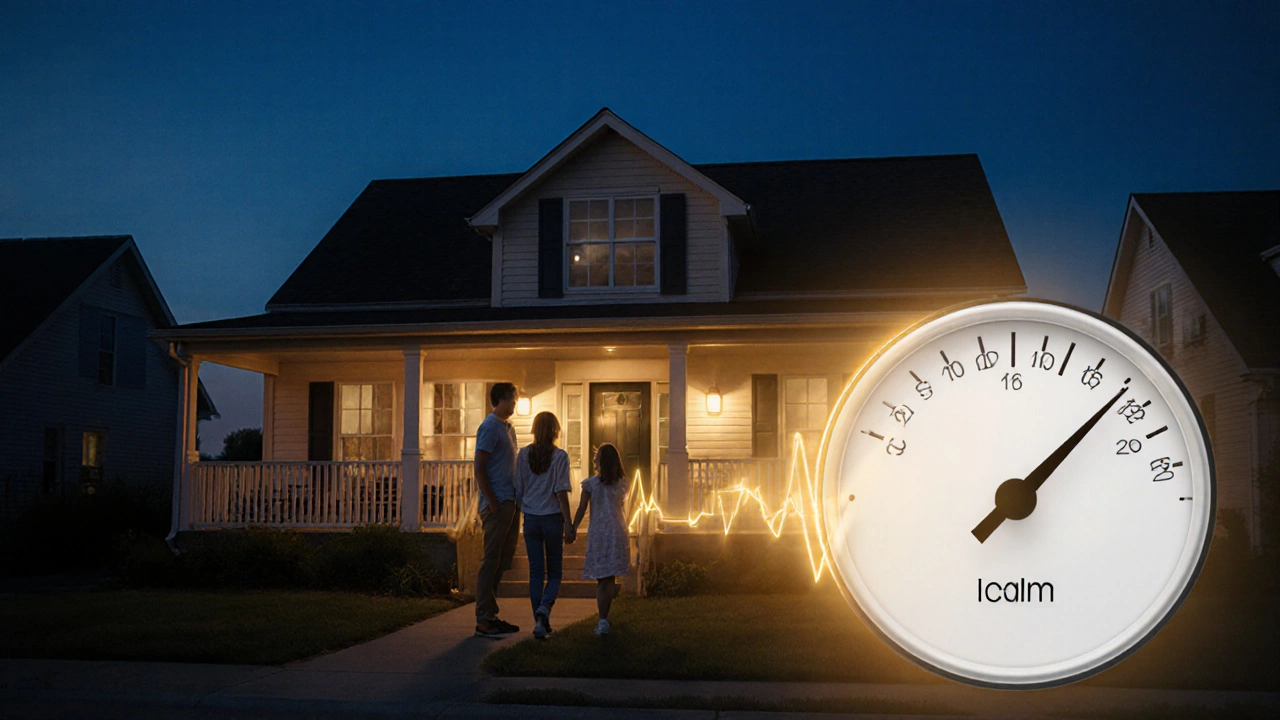Life Insurance Premium Calculator
Estimate your annual premium for different life insurance policies with never-increasing premiums. Input your details below to see how coverage amount, age, and policy type affect your costs.
Premium Estimate
Enter your details above to see your premium estimate.
When you shop for Life Insurance is a contract that pays a lump sum to your beneficiaries when you die. It protects loved ones from financial hardship caused by the loss of your income or savings. One of the biggest worries is: will my premium climb every year? If the answer is a firm “no,” you’re looking at policies whose premiums are locked in for life or for a set period. Below we break down exactly which products keep premiums steady, why they matter in Australia, and how to pick the right one for your situation.
Key Takeaways
- Level term and whole‑life policies lock in premiums for the entire term or life.
- Fixed‑premium whole life is the only truly permanent option that never rises.
- Some universal and indexed policies offer a guaranteed level period, after which premiums can change.
- Check the insurer’s financial strength through ASIC and APRA ratings before buying.
- Match the product to your goals: short‑term protection vs. lifelong cash‑value building.
What Does “Never Goes Up” Actually Mean?
Insurance premiums are based on risk. If the insurer expects the risk to stay the same, they can keep the price steady. In practice, three labels signal a never‑increasing premium:
- Level Premium - the amount you pay at the start stays the same for the whole term.
- Fixed Premium - the amount never changes, even if the policy lasts a lifetime.
- Guaranteed Premium - a promise in the contract that the insurer won’t raise the cost for a specified period.
Anything else-like a “reviewable” universal policy-can see adjustments after the guarantee period expires.
Types of Policies with Premiums That Don’t Rise
Below are the main Australian products that fit the three definitions.
Level Term Life Insurance is a pure protection plan that locks the premium for a set number of years, typically 10, 15 or 20.- Ideal for covering a mortgage or school fees.
- No cash value, so the cost stays low.
- Premiums are level for the agreed term; after that, the policy expires unless you renew.
- Premiums are fixed for life - you pay the same amount until death.
- Part of the premium goes into a savings component that grows tax‑free.
- Higher cost than term, but you never face a premium hike.
- Offers a level premium for the life of the policy.
- Coverage limits are lower (usually AU$10‑30k) but no medical underwriting.
- Good for final‑expense needs.
- After the guarantee, the insurer can adjust premiums based on interest earnings.
- Offers cash‑value growth and ability to increase coverage without new underwriting.
- Only the guaranteed period qualifies as “never goes up.”

Comparison Table: Premium Behavior & Key Features
| Product | Premium Trend | Coverage Length | Cash Value? | Typical Use‑Case |
|---|---|---|---|---|
| Level Term | Level for term only | 10‑30 years | No | Mortgage protection, child‑care costs |
| Whole Life | Fixed for life | Lifetime | Yes - builds tax‑free | Estate planning, lifelong protection |
| Guaranteed Issue | Fixed for life | Lifetime | No | Final expenses, seniors |
| Fixed‑Premium UL (guaranteed period) | Level during guarantee, then variable | Lifetime | Yes - flexible investment component | High‑net‑worth families seeking flexibility |
How to Choose the Right Never‑Increasing Policy
Follow these five steps to avoid paying more later.
- Define your goal. Need coverage for a mortgage? Term might be enough. Want wealth transfer? Whole life could fit.
- Check the guarantee details. Read the fine print - some “level” policies only lock in for the first few years.
- Assess insurer strength. Use the Australian Securities and Investments Commission (ASIC) to verify licensing and consumer complaints and the Australian Prudential Regulation Authority (APRA) for financial soundness ratings. A strong rating reduces the risk of policy lapses.
- Calculate total cost. Multiply the annual premium by the expected duration. Remember, a level term that ends early may leave you uncovered.
- Ask about surrender values. Whole life and UL have cash‑value components; understand fees if you want to pull money out.

Common Pitfalls and How to Avoid Them
- Assuming “guaranteed” means forever. Only whole life and guaranteed‑issue policies truly lock premiums for life.
- Over‑insuring. Buying a high‑cash‑value whole life for protection alone wastes money; separate protection and investment needs.
- Ignoring policy reviews. Some term products automatically convert to a more expensive whole life after the term ends.
- Skipping the medical exam. Even if you qualify for a no‑exam product, a medical underwriting can lead to a lower premium.
Real‑World Example: The Tan Family
Maria and James Tan, both 38, have a $800,000 mortgage and two kids. They wanted a policy that wouldn’t bite them later. They chose a 20‑year level term policy for $42,000 coverage per year - the premium stayed at $98 per month for the whole term. When the mortgage ended, they switched to a small whole‑life policy to cover final expenses, paying a fixed $45 per month for life. Their total annual cost stayed under $1,300, and they never faced a surprise hike.
Bottom Line
If you refuse to see your insurance bill climb, stick to products that explicitly promise level or fixed premiums. Level term works great for temporary needs, while whole life and guaranteed‑issue policies lock in for life. Always read the guarantee clause, check regulator ratings, and match the product to your financial goal.
Do all life insurance policies have level premiums?
No. Only policies labelled as level term, whole life, guaranteed‑issue, or fixed‑premium universal with a guaranteed period promise never‑increasing premiums. Regular universal or variable policies can adjust premiums each year.
Is whole life always more expensive than term?
Generally, yes. Whole life bundles protection with a cash‑value component, which lifts the base premium. However, the price stays the same for life, whereas term can become unaffordable if you need to renew after the guarantee period.
Can I convert a level term policy to whole life without extra medical checks?
Some insurers offer a “convert‑to‑whole” clause that lets you switch without medical underwriting, but the new premium will be higher because it reflects whole‑life pricing.
What should I look for in an insurer’s financial rating?
Check the APRA ‘A’ rating for capital adequacy and the ASIC Consumer Complaints Database for service quality. Strong ratings mean the company is more likely to honor long‑term guarantees.
Is a guaranteed‑issue policy a good fit for young families?
Usually not. Guaranteed‑issue policies have low coverage limits and higher premiums relative to the benefit. Young families benefit more from level term coverage that matches the mortgage or income needs.







